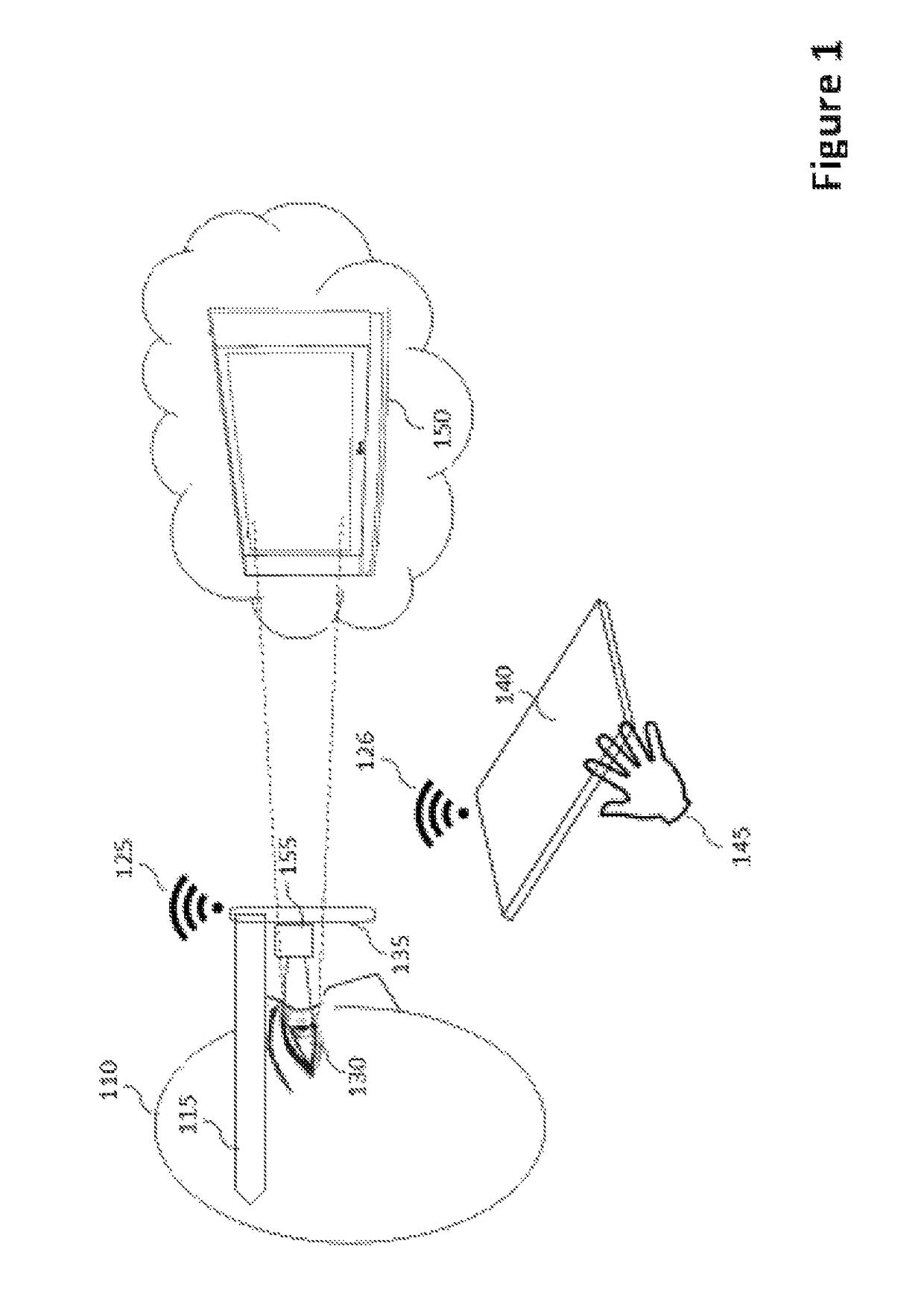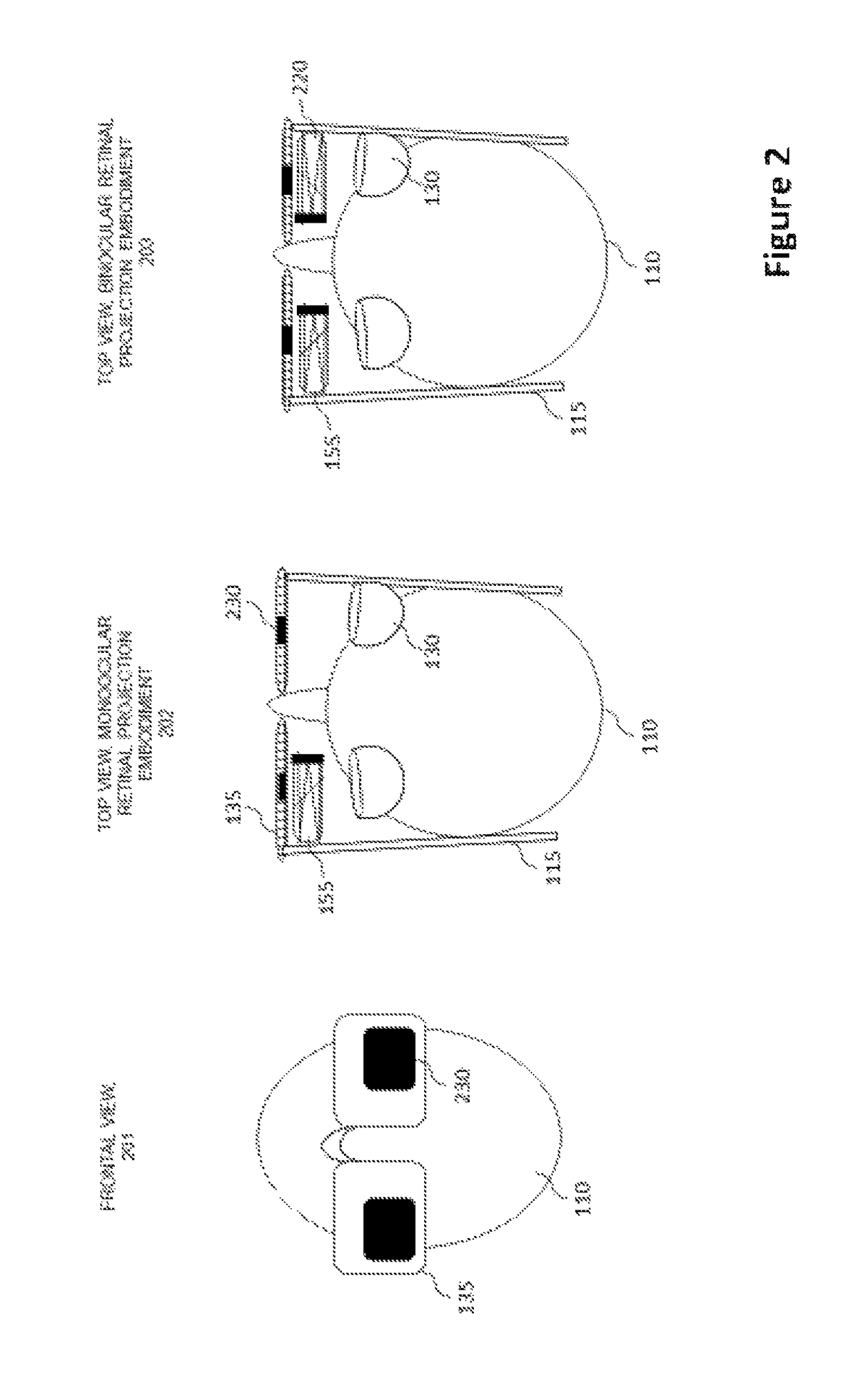Virtual monitor display technique for augmented reality environments
a virtual monitor and environment technology, applied in the field of virtual monitor display technology for augmented reality environments, can solve the problems of reducing portability due to weight and dimensions, reducing usability, and reducing the usability of the office desk, so as to avoid undesirable pixilation of the target image, preserving maximum resolution, and ensuring usability. the effect of maximum resolution
- Summary
- Abstract
- Description
- Claims
- Application Information
AI Technical Summary
Benefits of technology
Problems solved by technology
Method used
Image
Examples
Embodiment Construction
[0037]Among the display screens known in the prior art are both hardware realized screens, such as the computer monitors integrated with a common notebook computer and virtualized screens, such as those integrated with common head mountable devices of which Google Glass would be an example. The known hardware realized monitors are cumbersome in that they are bulky, weighty and view-obstructing when not in use. Moreover conventional hardware realized monitors are generally targeted for just one single user per session and therefore the fact that it is easy for other people to look over the user's shoulder and observe the screen is deemed a disadvantage in terms of privacy. Conventional hardware realized monitors may be scaled up to almost any size, however the disadvantages mentioned hereinabove as well as the cost of production will generally scale up in equal measure. Virtualized screens, as known in the prior art, are also beset with a host of problems. Most commonly the lightweig...
PUM
 Login to View More
Login to View More Abstract
Description
Claims
Application Information
 Login to View More
Login to View More - R&D
- Intellectual Property
- Life Sciences
- Materials
- Tech Scout
- Unparalleled Data Quality
- Higher Quality Content
- 60% Fewer Hallucinations
Browse by: Latest US Patents, China's latest patents, Technical Efficacy Thesaurus, Application Domain, Technology Topic, Popular Technical Reports.
© 2025 PatSnap. All rights reserved.Legal|Privacy policy|Modern Slavery Act Transparency Statement|Sitemap|About US| Contact US: help@patsnap.com



